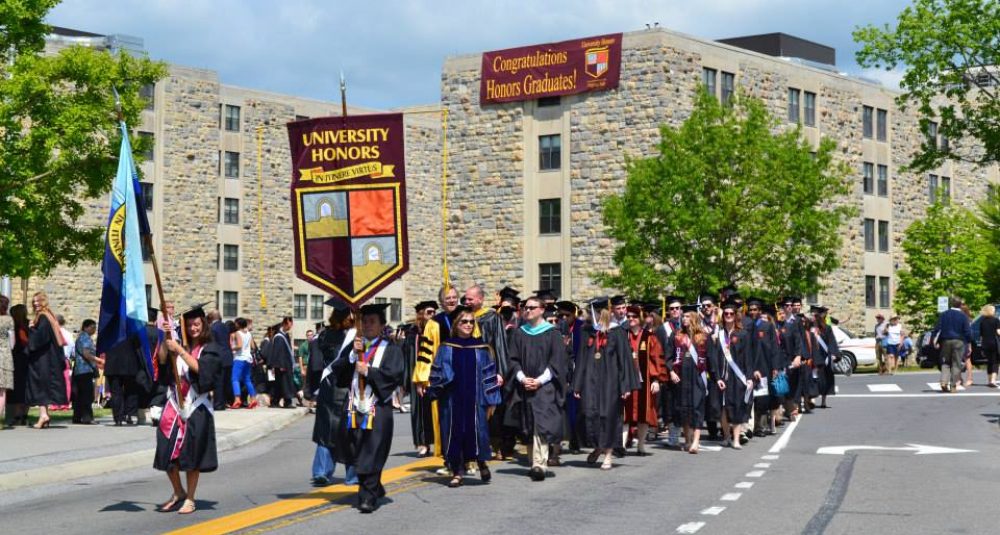A report by the New America Foundation, The Out of State Student Arms Race, is the subject of another post on this site, How Much Should Public Universities Spend on Merit Aid? Although we have some disagreements with the New America report, it contains interesting arguments against the excessive use of non-need-based aid by public universities along with a list of those universities that provide the highest percentages of non-need-based aid to incoming freshmen.
The report would find full agreement from this quarter if it had been produced at a time past, when public universities received most of their funding from state appropriations and could maintain lower tuition rates for all. Now, unfortunately, many public institutions are forced to use merit aid more “strategically,” sometimes as part of the recruitment of out-of-state students and the greater revenue they bring, even after merit funding. To the extent that this use of merit aid works to deny access to merit-worthy, low-income applicants in-state, we do agree with the New America Foundation.
(Please note that separate posts discuss National Merit Scholarship aid, by institution. This post address the availability of all types of merit aid.)
In any event, the list below should be helpful to some parents with FAFSA income levels that are relatively high but that may still be stretched to the limit without non-need-based aid. We are not listing all the public universities on the list, but most of the larger ones are listed. After the university name, we will list the percentage of freshmen receiving non-need-based aid, followed by the average dollar amount of that aid per student. Most of the data is from 2013-2014. Schools where at least 20% of freshmen receive at least $4,000 in average merit aid are listed in bold.
Public universities below with the highest average per capita merit aid are UT Dallas ($13,766); Alabama ($11,919); Colorado ($9,497); Vermont ($9,283); Arizona ($8,137); Alabama Birmingham ($8,020); and New Hampshire ($8,020). Please note that some schools may sponsor very high numbers of National Merit Scholars (e.g., Oklahoma), but not provide as much merit aid in other forms. Still other schools (Alabama) fund both NMS aid and other merit aid at generous levels. And then there are the public elites that fund little or no aid that is not need-based.
North Dakota–41.73% of freshmen–$1,173 per student
Truman State–40.5% of freshmen–$4,693 per student
South Carolina–39.1% of freshmen–$5,253 per student
Vermont–33.3% of freshmen–$9,283 per student
Iowa State–32.6% of freshmen–$3,049 per student
Miami Ohio–31.3% of freshmen–$8,174 per student
West Virginia–30.7% of freshmen–$2,604 per student
Ohio State–29.9% of freshmen–$6,757 per student
UT Dallas–29.8% of freshmen–$13,766 per student
Auburn–29.6% of freshmen–$5,976 per student
Montana–29.3% of freshmen–$3,250 per student
SUNY Plattsburgh–28.9% of freshmen–$6,237 per student
Clemson–27.4% of freshmen–$7,456 per student
Alabama Huntsville–27.1% of freshmen–$7,494 per student
Oklahoma State–27% of freshmen–$6,291 per student
Colorado–26.9% of freshmen–$9,497 per student
Michigan Tech–26.7% of freshmen–$5,367 per student
Troy Univ–26.5% of freshmen–$5,132 per student
Arizona State–25.7% of freshmen–$7,733 per student
Col School of Mines–25.6% of freshmen–$7,391 per student
Mississippi–25.6% of freshmen–$6,876 per student
Alabama Birmingham–24.7% of freshmen–$8,020 per student
Delaware–24.6% of freshmen–$6,074 per student
Salibury–24.5% of freshmen–$2,127 per student
South Dakota–24.5% of freshmen–$4,505 per student
Southern Utah–24.5% of freshmen–$3,863 per student
Alabama–24.4% of freshmen–$11,919 per student
Arizona–24% of freshmen–$8,137 per student
Kansas State–24% of freshmen–$4,145 per student
Mississippi State–24% of freshmen–$3,527 per student
Iowa–23% of freshmen–$4,115 per student
Oklahoma–22.7% of freshmen–$4,540 per student
Kentucky–22% of freshmen–$7,789 per student
Missouri–21.1% of freshmen–$4,763 per student
Idaho–21.1% of freshmen–$3,133 per student
Maryland–19.9% of freshmen–$6,451 per student
Michigan–17.9% of freshmen–$4,938 per student
Indiana–17.6% of freshmen–$7,671 per student
Minnesota –17.4% of freshmen–$5,875 per student
Kansas–17.4% of freshmen–$3,235 per student
Arkansas-16.3% of freshmen–$4,145 per student
LSU–15.2% of freshmen–$3,233 per student
Alaska Fairbanks–15% of freshmen–$4,306 per student
Tennessee–13.8% of freshmen–$1,571 per student
New Hampshire–13% of freshmen–$8,020 per student
UC Berkeley–13% of freshmen–$4,583 per student
Maine–12.8% of freshmen–$4,030 per student
Connecticut–12.8% of freshmen–$7,045 per student
Rutgers–12.1% of freshmen–$4,300 per student
Massachusetts–11.8% of freshmen–$4,386 per student
Nebraska–11.6% of freshmen–$5,589 per student
Illinois–10.9% of freshmen–$3,980 per student
Rhode Island–9% of freshmen–$6,354 per student
Penn State–7.8% of freshmen–$3,230 per student
Utah–7.7% of freshmen–$7,917 per student
Wisconsin–7% of freshmen–$3,989 per student
Georgia–6.9% of freshmen–$2,019 per student
Florida–5.4% of freshmen–$2,000 per student
Oregon–5.3% of freshmen–$5,207 per student
North Carolina–3.2% of freshmen–$8,393 per student
Univ at Buffalo SUNY–2.6% of freshmen–$6,030 per student
Virginia–2.5% of freshmen–$5,821 per student
Washington–2% of freshmen–$7,000 per student
UT Austin–1% of freshmen–$5,586 per student

